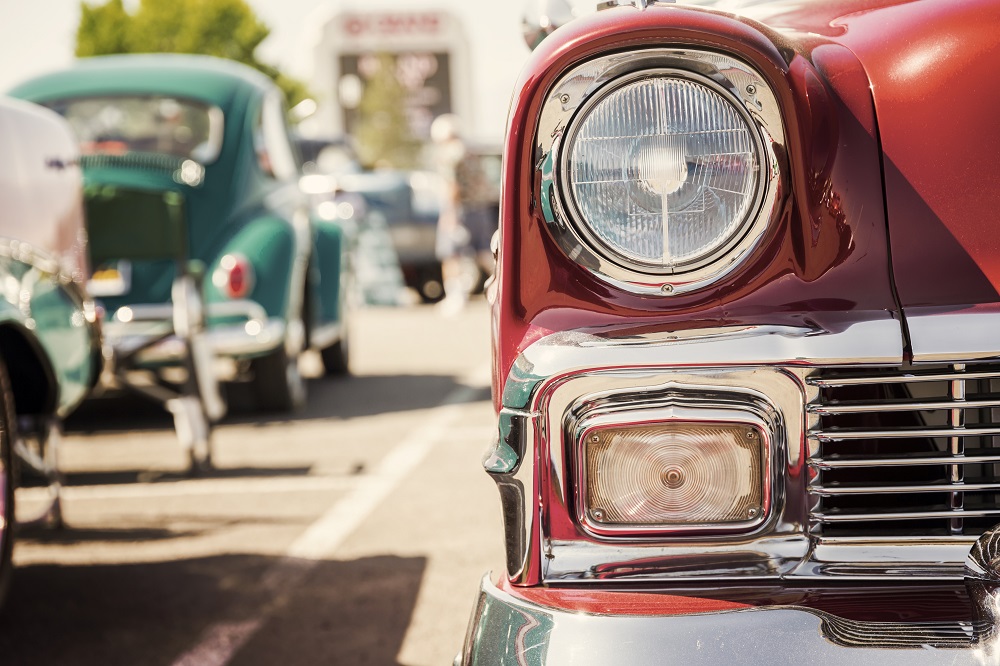Who remembers life in 1950s America?
Life in 1950s America is often remembered through a nostalgic lens—complete with diners, jukeboxes, and white picket fences. But behind the polished image of postwar prosperity was a society undergoing major transformation.
From suburban expansion and booming consumerism to Cold War fears and civil rights struggles, the 1950s were anything but one-dimensional.
In this article, we’ll break down what life in 1950s America was really like—from family life and fashion to politics, pop culture, and the quiet unrest building across the country.

The All-American family idea
A central feature of life in 1950s America was the traditional nuclear family. The cultural norm was clear: Dad worked, Mom stayed home, and the children went to school. This family structure was reinforced by popular media and educational materials of the time. Shows like Leave It to Beaver and Father Knows Best showcased a neatly ordered domestic world where problems were minor and quickly resolved.
However, this image didn’t represent every household. While many women embraced their roles as homemakers, others felt trapped by the limitations placed on them. The pressure to conform led to widespread dissatisfaction beneath the surface, feelings that would erupt into the women’s liberation movement a decade later.
Suburban dreams (and Segregation)
A major shift in life in 1950s America was the rapid growth of the suburbs. With help from the G.I. Bill, millions of veterans purchased affordable homes in sprawling communities like Levittown, New York. These planned neighborhoods became symbols of postwar success and offered families a chance to own their slice of the American Dream.
Yet these suburban utopias were often racially exclusive. Black families and other minorities faced discriminatory housing policies and were frequently denied access to homeownership in these areas.
Redlining and other forms of segregation made life in 1950s America far more divided than the glossy magazines let on.
Economic boom and consumerism
The end of World War II ushered in an unprecedented era of prosperity. Wages rose, jobs were plentiful, and people had disposable income. This made life in 1950s America feel secure for many, especially white middle-class families.
Consumer culture flourished. Families bought televisions, refrigerators, and new automobiles. Shopping malls began popping up across the country. Brands and advertising became deeply woven into daily life, with TV commercials shaping public tastes and trends.
Owning the latest appliances or driving a brand-new car wasn’t just convenient—it was a sign of success and social status. Material comfort became a cornerstone of the American identity.
Pop culture takes off
Entertainment was a major part of life in 1950s America, thanks to the rise of television and rock ’n’ roll. TV sets became household staples, and Americans tuned in to watch variety shows, comedies, and news broadcasts. Programs like I Love Lucy and The Ed Sullivan Show became cultural touchstones.
Meanwhile, a new musical genre—rock ’n’ roll—captivated the youth. Elvis Presley burst onto the scene with swagger and a sound that drove teens wild and made parents nervous. Alongside him were stars like Chuck Berry and Little Richard, who introduced rhythm and blues influences into mainstream music.
The teenager emerged as a powerful consumer group, shaping music, fashion, and attitudes. From soda shops to drive-in theaters, the youth culture of the ’50s laid the groundwork for the social revolutions to come.
Racial injustice and early Civil Rights efforts
While some Americans were enjoying comfort and progress, others were fighting just to be treated as equals. Segregation was legally enforced in many parts of the country, and racism permeated institutions and everyday interactions.
Yet life in 1950s America also saw the early sparks of the Civil Rights Movement. In 1954, the landmark Brown v. Board of Education decision declared racial segregation in public schools unconstitutional. Just a year later, Rosa Parks’ brave defiance in Montgomery set off a citywide bus boycott led by Martin Luther King Jr.
These actions marked the beginning of a long and painful fight for equality. The decade closed with more Black Americans demanding justice and equality—signs of the change to come in the 1960s.
Cold War Anxiety
You can’t talk about life in 1950s America without mentioning the Cold War. As tensions escalated between the United States and the Soviet Union, Americans lived under the constant threat of nuclear war.
This fear trickled down into daily life. Schoolchildren practiced “duck and cover” drills. Families built fallout shelters in their backyards. Hollywood churned out sci-fi thrillers featuring aliens and nuclear disasters—thinly veiled metaphors for Cold War paranoia.
Domestically, the Red Scare led by Senator Joseph McCarthy fueled witch hunts for alleged communists. Careers were destroyed, and a sense of suspicion permeated everything from government to entertainment.
School, Gender, and Expectations
Education in the 1950s was booming. Schools struggled to keep up with the baby boom generation, and a new emphasis on math and science emerged, especially after the Soviet launch of Sputnik in 1957. This single event caused widespread panic and led to the U.S. ramping up its educational system.
But gender expectations shaped educational paths. Boys were steered toward science, math, and shop classes. Girls were often directed toward home economics, sewing, and child-rearing courses. These tracks reflected the larger social structure of life in 1950s America, where men were trained to be providers and women were expected to be homemakers.
Fashion and food
The style of life in 1950s America was marked by formality and polish. Men wore suits and fedoras; women wore dresses with cinched waists, pearls, and heels. Teen fashion, however, broke the mold with poodle skirts, saddle shoes, and greaser leather jackets.
Food culture was also shifting. Convenience foods like frozen dinners, boxed cake mixes, and instant coffee became popular. Families gathered around TV trays for meals, embracing the novelty of fast, easy cooking. Drive-ins and diners became hot spots for youth culture, and the first McDonald’s franchises hinted at the fast-food empire to come.

Religion and morality
Religious observance was high during this decade, and church attendance became a social norm. “Under God” was added to the Pledge of Allegiance in 1954, and “In God We Trust” was declared the official motto of the United States in 1956.
Moral values in 1950s America emphasized conformity, traditional roles, and public decency. Divorce, premarital sex, and homosexuality were taboo. While this created a sense of order for some, it also forced many to suppress their identities and desires, leading to silent suffering and cultural tension.
Ready for a trip down memory lane? I got you. This book, Old School: The Evolution of America’s Pastime, will make you both happy and a tad nostalgic, too.
The underlying tension
Beneath the surface of comfort and tradition, life in 1950s America was filled with contradictions. Women were quietly frustrated by limited roles. Black Americans faced systemic racism. The threat of nuclear war loomed large. And teenagers were beginning to question the values of their parents’ generation.
The seeds of the 1960s counterculture and civil rights revolutions were already planted, growing slowly under the surface of 1950s conservatism.
Conclusion
Life in 1950s America was a time of great contrast. On the outside, the country appeared stable, prosperous, and united. Suburban growth, consumer goods, and televised entertainment gave the impression of a nation in harmony. But beneath this veneer were cultural rifts, political fears, and social inequalities that couldn’t be ignored forever.
The 1950s set the stage for everything that followed—civil rights victories, youth rebellion, women’s liberation, and cultural upheaval. Looking back, we see not just a time of nostalgia but a decade packed with complexity, contradictions, and the quiet stirrings of transformation.
Related article: A History of 46 US Presidents. Who Was Your Favorite?
